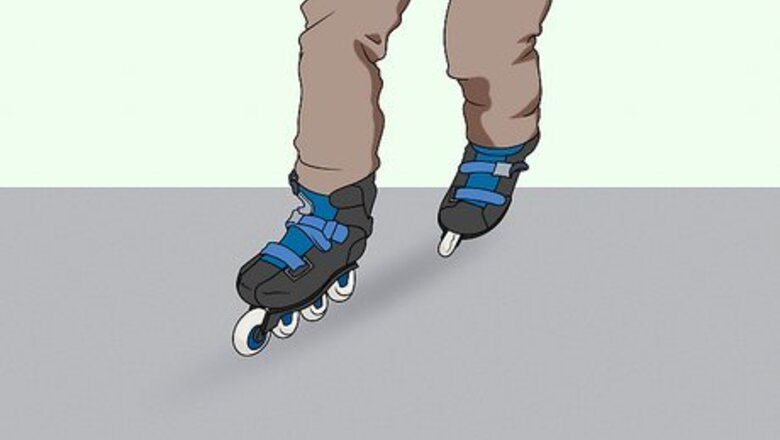
views
How do you do a basic turn?
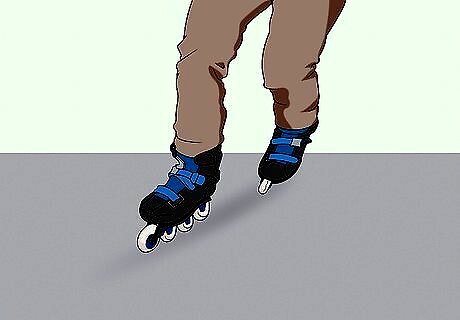
Change direction by rolling around a curve with your skates parallel. Start by spacing your skates apart by about 6 in (15 cm), lining up the back wheel of your front skate with the front wheel of your rear skate. Keep both skates parallel, and bend your knees as you go around the curve—this will help you keep your footing. Follow the curve as you skate, which will help you gradually change direction. When you roll around a curve, you won’t slow down or pick up speed—you’ll just change direction slightly.
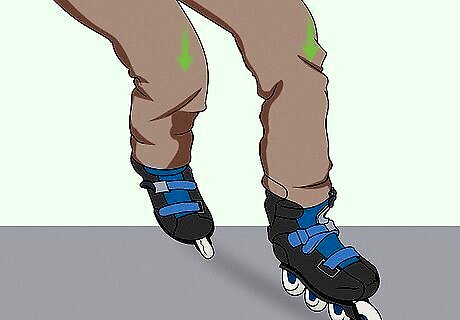
Bend your knees as you roll around the curve. Bending your knees helps you stay balanced as you change direction. Keep one skate in front of the other, with the rear wheel of the front skate in line with the front wheel of the back skate.
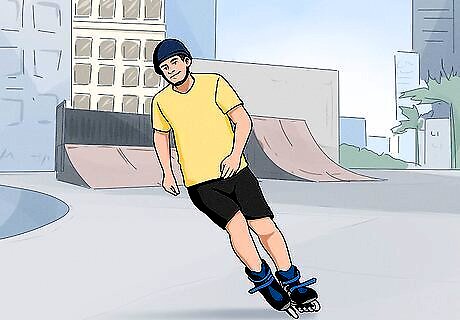
Lean into the turn as you roll around a curve. Bend your inner knee even more as you shift your weight into the curve. As you lean, angle your wheels toward the outside of the curve. Once you’ve cleared the turn, straighten your inner leg so it’s only slightly bent, and recenter yourself and your skates. For example, if you’re leaning to the right as you turn, you’d shift your weight to the outer right edge of your right skate, and the inner right edge of your left skate. If you’re leaning to the left, you’d shift your weight to the outer left edge of your left skate, and the inner left edge of your right skate. The faster you approach the turn, the more you’ll need to bend your knee.
What is another easy way to turn?
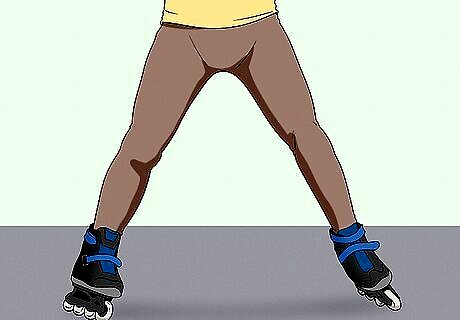
Try an A-frame turn. Stand with your feet about shoulder-width apart, with both skates angled inward to form an “A” shape. Skate forward, shifting your weight to the inner edges of your skates. To turn right, apply a little extra pressure to your left foot. To turn left, put some extra pressure on your right foot.
How do you turn quickly?
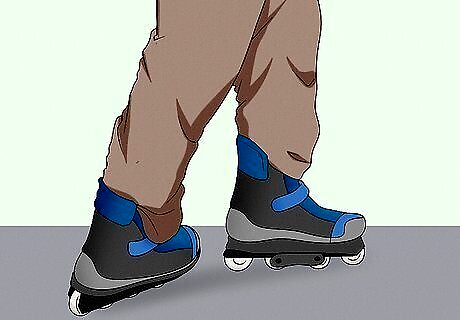
Cross 1 foot over the other while slowly turning. Stand upright on your skates, balancing your weight between both feet. Lift your right foot and cross it over your left, pointing your right foot in the direction you’d like to turn. Then, step forward with your left foot, angling your toes at a 45-degree angle away from your right foot. If you’re very new to rollerblading, this technique might be tough to nail down at first. Crossovers can be extra challenging if your skates are very long.

Continue crossing your feet and stepping in a circle formation. Cross your right foot over your left foot again, pointing your toes in the direction you’d like to turn. Then, step with your left foot once again, pointing your toes at a 45-degree angle away from your right foot. Repeat this pattern of crossing and stepping until you’ve moved in a complete circle. For now, focus on shifting your weight from foot to foot and getting the basic movements down.
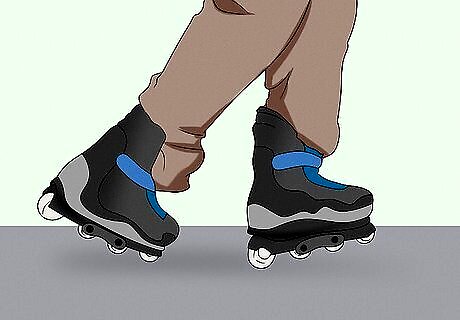
Try gliding your feet instead of stepping. Instead of physically lifting and planting your skates on the ground in slow, plodding steps, try gliding forward with your skates. Push off with 1 leg to get yourself moving. As you approach a turn, cross your right foot over your left, pointing your toes in the direction you’d like to go. Then, glide on your left skate, pointing your toes at a 45-degree angle away from your right skate. It’s okay if your left skate isn’t exactly 45 degrees away from your right. As long as your left foot is angled, you’ll still be able to turn.
How do you turn while you’re moving quickly?
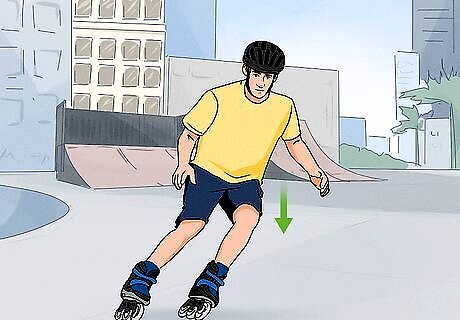
Maintain your balance by leaning into the turn and bending your knees. Lower your center of gravity so your knees are slightly bent. Then, as you turn, lean into the curve.
How do you spin on your rollerblades?
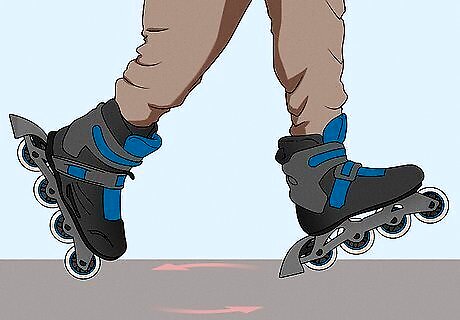
Balance between your toe and your heel. Plant your left heel on the ground, so only your rear wheel is touching the floor. Then, shift your weight onto the toe of your right skate, so only the front wheel touches the ground. Take a moment to find your balance in this position—it can be a little tricky, but don’t give up!
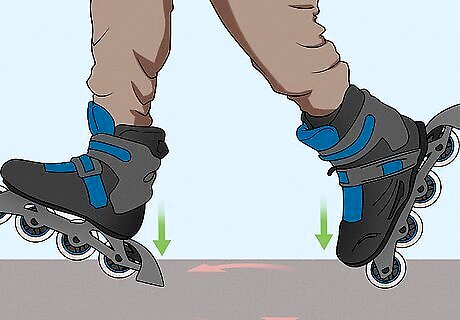
Push on your toe and pull your right foot behind your left. Push down on the front right wheel, guiding the skate out and behind your left skate. Essentially, pretend you’re making a curved arc with your right skate.
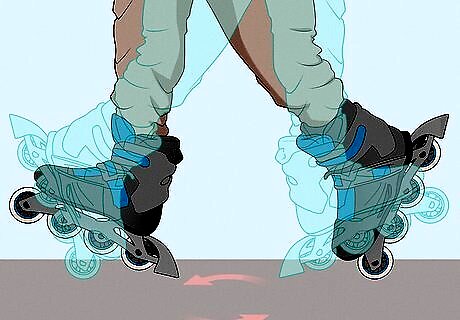
Repeat this motion quickly to start spinning. Push your right toe out in a curved arc behind your left skate, spinning the rest of your body as you go. Then, push your toe back in toward your other skate. Continue moving your right skate out and in to maintain momentum as you spin. As you practice, try to keep your left heel anchored on the ground.
How do you skate backward?
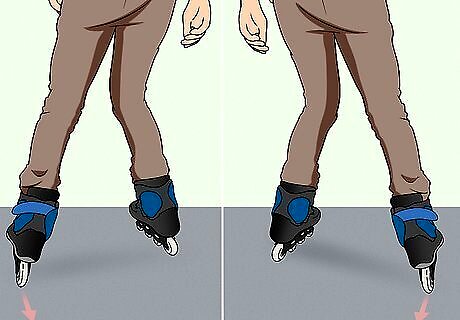
Step backward with both skates angled inward. Bend your knees a little bit and take a step back with your right skate, pointing your toe toward the center of your left skate. Then, step back with your left skate, angling your toe in the middle of your right skate. Continue taking small steps, keeping your knees bent as you go.
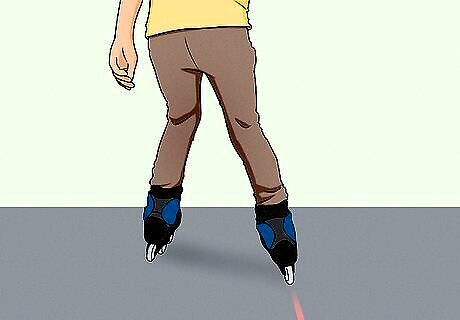
Transition from stepping to gliding. Start taking larger steps backward on your skates. When you take bigger steps, try gliding your skates in a smooth, fluid motion. As you get the hang of this, slowly point your skates forward instead of angling them inward. Skating backward may feel pretty awkward at first. That’s okay! Take as much time as you need to practice stepping and gliding backward.

Slow down by angling 1 skate sideways. Angle your upper body about 45 degrees to the right, and turn your right skate out at a 90-degree angle. Rake your skate on the ground multiple times—this will help you brake. This technique is easier to pull off when you’re skating slowly. You can also do this with your left foot, if that feels more comfortable. Just be sure to angle yourself 45 degrees to the left as you brake.
How do you do a 180 jump on rollerblades?

Practice jumping without your rollerblades on. Stand with your feet parallel and flat on the ground. Extend your right arm forward in a straight, horizontal line, with your left arm extended behind you. Then, bend your knees and jump, landing with your feet turned 90 degrees to the left.
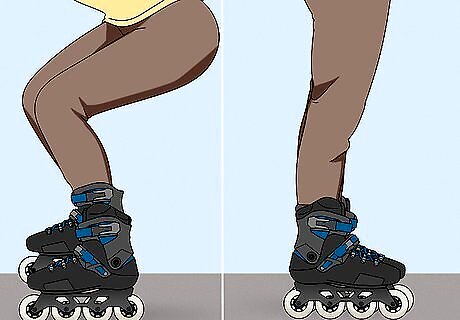
Try jumping with your rollerblades on. Stand in the same position as you did before, with your feet parallel and your arms extended. Start by jumping 90 degrees to the left. As you get more comfortable with these small jumps, try working your way up to a 180-degree jump.
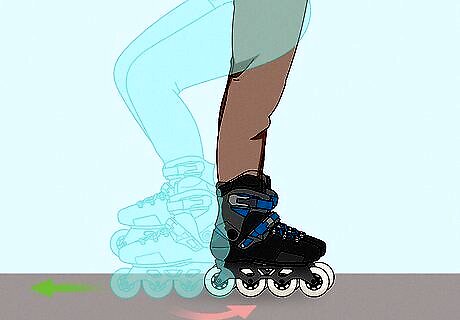
Practice jumping as you skate. Skate forward slowly in a straight line, keeping both arms extended in front and behind you. When you feel comfortable, try doing a 180 jump on your skates. Skate backward for a few seconds, and then do another 180 jump so you’re facing forward again. It may take many tries before you get the hang of this trick—that’s okay! Just keep practicing until you feel confident.















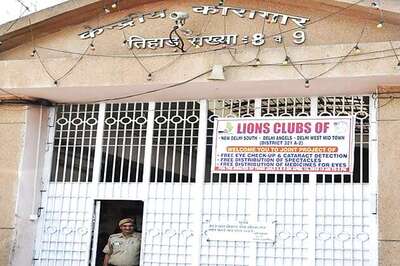
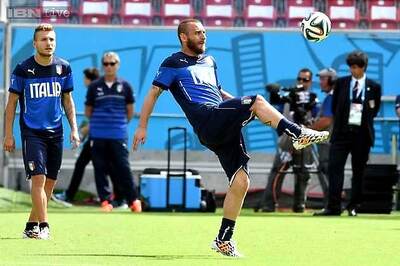



Comments
0 comment